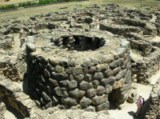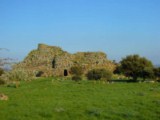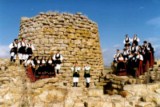|
NURAGHE SARDINIA - SOUTH ITALY The nuraghe is the main type of megalithic edifice found in Sardinia, dating back before 1000 BC. Today it has come to be the symbol of Sardinia and its distinctive culture.
The numerous nuraghi which are spread all over Sardinia, occupy a very relevant place among the archeological sites that have been left in the Western Mediterranean basin by the various cultures which have, over the centuries, lived in these lands. These majestic buildings have a prominent role in the Sardinian landscape so much so that they remain stamped on the visitor's mind as a characteristic image of this mysterious and extraordinary land and are a symbol and emblem of a whole population. The name of these typical Sardinian Nuraghi derives from the word "nurra" which means "heap" or "mound", but also "cavity". It is perhaps for this double meaning that the word has been applied to the original shape of the Nuraghi, built by laying big stones one on top of the other to create a "hollow" which is then covered by a stone dome to form a room. |
||||||||





